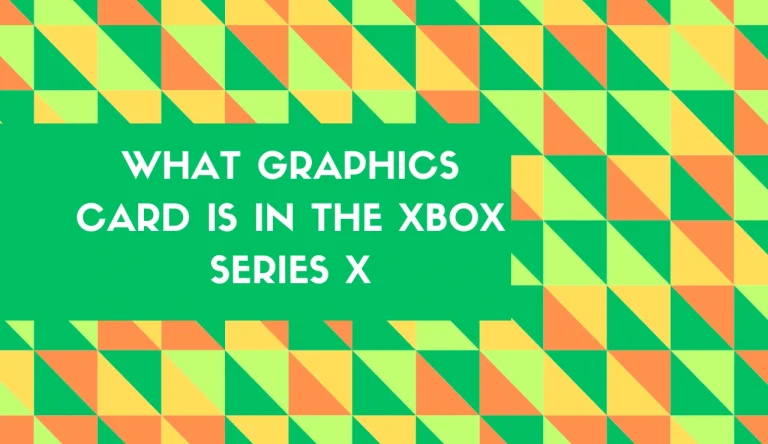How Much Do Graphics Cards Cost
Graphics cards are an essential component in modern computing, particularly for those engaged in graphics-intensive activities such as gaming and video editing. How much do graphic cards cost can vary significantly depending on various factors.
This article aims to provide an objective overview of the price ranges for different types of graphics cards, including entry-level, mid-range, and high-end options. By understanding these price ranges, readers will be better equipped to make informed decisions when purchasing a graphics card that suits their needs and budget.
Factors affecting graphics card prices include the brand, model, performance capabilities, and market demand. Entry-level graphics cards typically range from $100 to $200, offering decent performance for casual users or those on a tight budget.
Mid-range options often fall within the $200 to $400 range and provide a balance between affordability and enhanced performance. High-end graphics cards cater to professionals or serious gamers demanding top-tier performance and can cost anywhere from $400 up to several thousand dollars.
To ensure finding the best deals on graphics cards, readers will also benefit from tips provided in this article. These insights will help them navigate the market effectively while considering factors beyond price alone.
Factors Affecting Graphics Card Prices
One of the key factors influencing graphics card prices is the level of demand in the market. Factors affecting availability also play a crucial role in determining the cost of graphics cards.
For instance, during periods when there is high demand for graphics cards, such as when new games or software are released, prices tend to increase due to limited supply.
Additionally, the impact of cryptocurrency mining on prices cannot be overlooked. In recent years, the rise in popularity of cryptocurrencies has led to a surge in demand for powerful graphics cards capable of mining. This increased demand has caused prices to skyrocket as miners compete for limited stock.
Consequently, these factors affecting availability and the influence of cryptocurrency mining have contributed significantly to fluctuations in graphics card prices.
Price Ranges for Entry-Level Graphics Cards
This discussion will focus on the price ranges for entry-level graphics cards, specifically looking at affordable options for casual gamers as well as a performance versus price comparison.
Entry-level graphics cards offer an accessible option for individuals who are looking to enjoy gaming without breaking the bank. By comparing the performance and price of various entry-level graphics cards, users can make informed decisions based on their specific needs and budget constraints.

Affordable Options for Casual Gamers
Affordable options for casual gamers can be found in the lower price range of graphics cards. Entry-level graphics card options offer budget-friendly gaming choices for individuals who engage in gaming as a casual hobby rather than a serious pursuit.
These cards provide adequate performance for older or less demanding games, allowing gamers to enjoy their favorite titles without breaking the bank. While they may not possess the cutting-edge features and high-end capabilities of more expensive models, affordable graphics cards still deliver satisfactory visual experiences for most casual gamers.
Additionally, these entry-level options often consume less power and produce less heat, making them suitable for smaller computer systems with limited cooling capabilities. With careful research and consideration, casual gamers can find affordable graphics cards that meet their needs without compromising on performance or quality.
Performance vs. Price Comparison
A careful examination of the performance and price comparison reveals a compelling argument for investing in higher-end graphics cards that offer an unparalleled gaming experience.
When considering performance vs. power consumption, higher-end graphics cards tend to deliver superior performance while consuming more power compared to their affordable counterparts. However, the increased power consumption is justified by the enhanced gaming experience they provide.
Additionally, when evaluating price vs. longevity, it becomes apparent that higher-end graphics cards have a longer lifespan due to their advanced features and capabilities. This results in a better return on investment as they can handle demanding games and software updates for a longer period of time.
In summary, although higher-end graphics cards may come with a higher initial cost and consume more power, their superior performance and longevity make them worth the investment.
- Higher-end graphics cards offer superior gaming experience
- They may consume more power but justify it through enhanced performance
- Higher-end graphics cards have a longer lifespan due to advanced features
- Better return on investment as they can handle demanding games for longer
- Worth the initial cost due to superior performance and longevity
Mid-Range Graphics Card Price Ranges

Mid-range graphics cards typically fall within a price range that is considered reasonable for most consumers. These cards offer a good balance between price and performance, making them popular choices for gamers and casual users alike.
When considering mid-range graphics cards, it is important to look at benchmark tests to determine their performance capabilities. These benchmarks provide objective data on the card’s ability to handle various tasks such as gaming or rendering.
Additionally, it is crucial to choose the right mid-range graphics card based on individual needs and requirements. Factors such as desired resolution, game settings, and compatibility should be taken into account when making a decision.
By carefully evaluating these aspects, consumers can make an informed choice that offers both value for money and satisfactory performance.
High-End Graphics Card Price Ranges
High-end graphics cards cater to the needs of enthusiasts and professionals who require premium performance for tasks such as video editing, 3D modeling, and rendering.
These cards are designed to handle intensive workloads and deliver exceptional graphical capabilities, making them ideal for demanding applications.
Additionally, high-end graphics cards are crucial for gamers looking to experience gaming at 4K resolution or in virtual reality, as they provide the necessary power and features to achieve smooth gameplay and immersive visuals.
Premium Performance for Enthusiasts and Professionals
Premium performance graphics cards cater to the demands of enthusiasts and professionals by offering unparalleled power and advanced features. These high-end graphics cards are designed for individuals who require top-notch performance for tasks such as gaming, video editing, and 3D rendering.
When it comes to price ranges, premium performance graphics cards can be quite expensive due to their cutting-edge technology and superior capabilities. The cost can vary depending on the specific model and brand, but generally, these graphics cards fall within a range of $800-$1500.
With this price tag, users can expect exceptional graphical processing power, extensive memory capacity, and support for multiple displays. Additionally, premium performance graphics cards often come with enhanced cooling systems to handle the increased heat generated by intense gaming or resource-intensive applications.
Considerations for Gaming at 4K or VR

Moving on to the current subtopic, when considering gaming at 4K or in virtual reality (VR), there are a few essential considerations to keep in mind. Firstly, gaming on multiple monitors can provide an immersive experience, allowing for a wider field of view and enhanced gameplay.
However, it requires a powerful graphics card capable of driving such high-resolution displays without compromising performance. Additionally, the benefits of liquid cooling for graphics cards cannot be overlooked. Liquid cooling systems efficiently dissipate heat generated by intense gaming sessions, ensuring optimal performance and longevity of the graphics card.
This technology minimizes noise levels and provides better temperature control compared to traditional air-cooling methods. Incorporating these considerations into your decision-making process will help you achieve an outstanding gaming experience at 4K resolution or in VR environments.
Tips for Finding the Best Graphics Card Deals
When searching for the best graphics card deals, it is important to consider various strategies that can help consumers find affordable options. One strategy is to look for discounts and sales offered by retailers or manufacturers.
Many times, these discounts can significantly reduce the price of a graphics card, making it more budget-friendly. Another option to consider is purchasing a second-hand graphics card. While this may seem risky, there are reputable sellers and platforms that offer warranties and guarantees on used graphics cards.
By opting for a second-hand option, consumers can often save a significant amount of money while still obtaining a high-quality graphics card. It is essential to research and compare prices from different sellers before making a purchase to ensure the best deal possible.
Frequently Asked Questions
Conclusion
In conclusion, the cost of graphics cards can vary greatly depending on various factors such as brand, model, and performance capabilities. Entry-level graphics cards generally range from around $100 to $200, while mid-range options can cost anywhere from $200 to $400.
High-end graphics cards tend to be the most expensive, often priced at $500 or more. When looking for the best deals on graphics cards, it is important to consider factors such as discounts, sales, and second-hand options.






